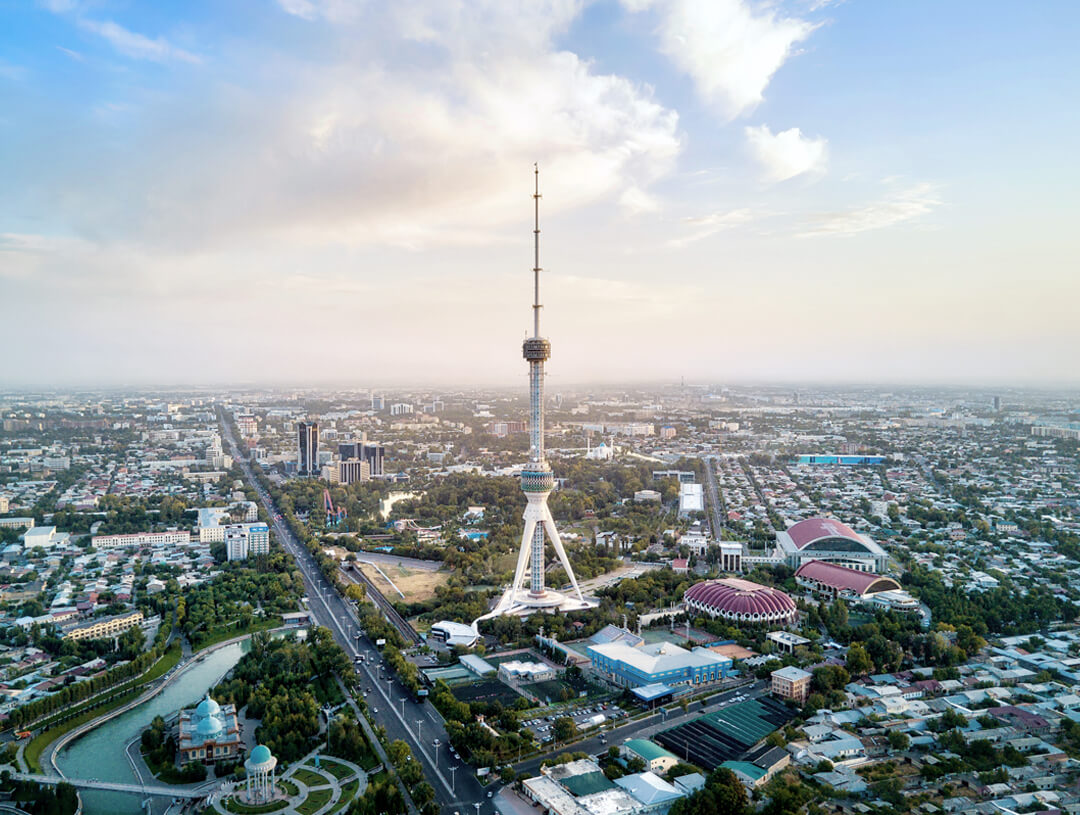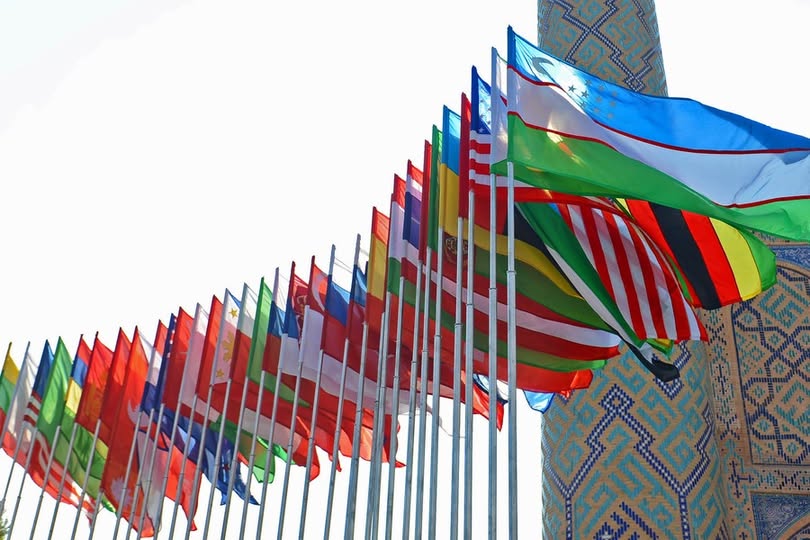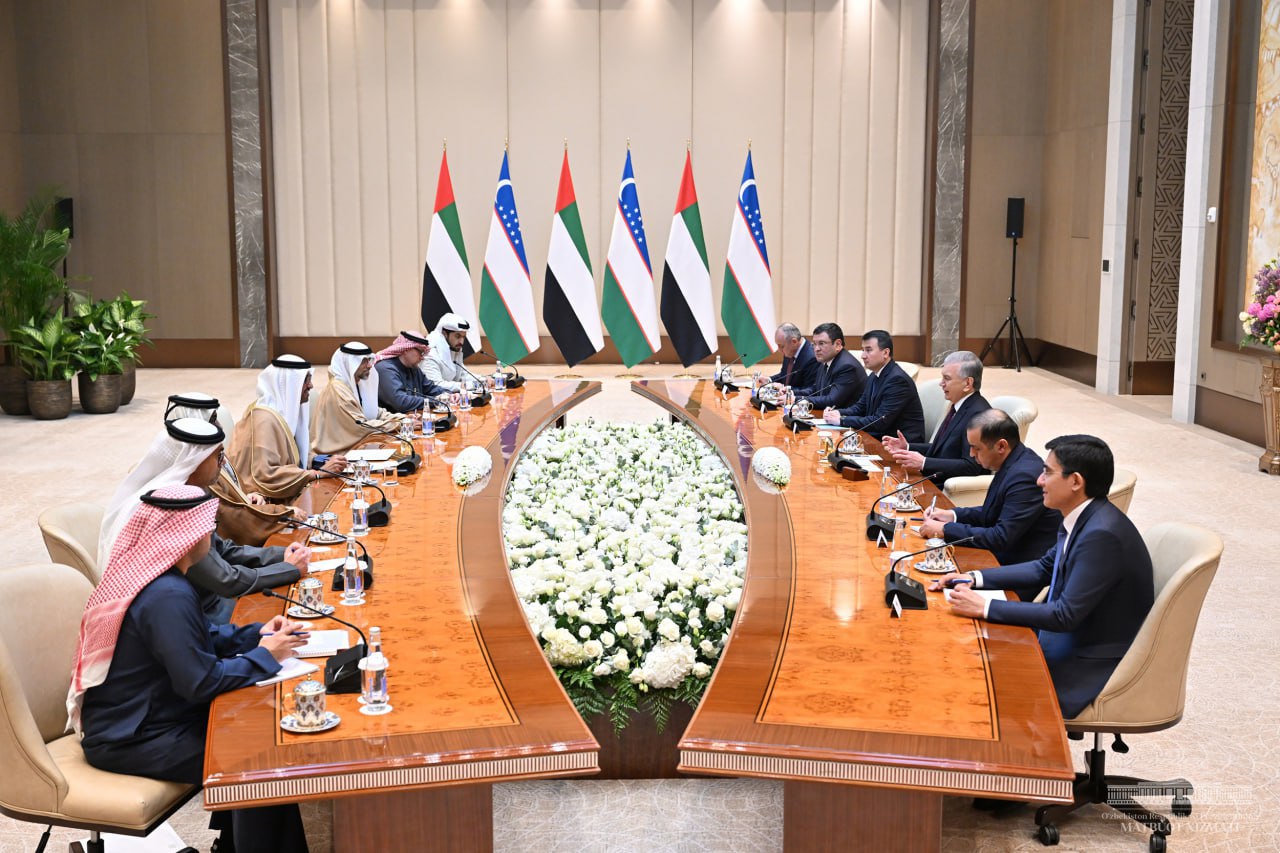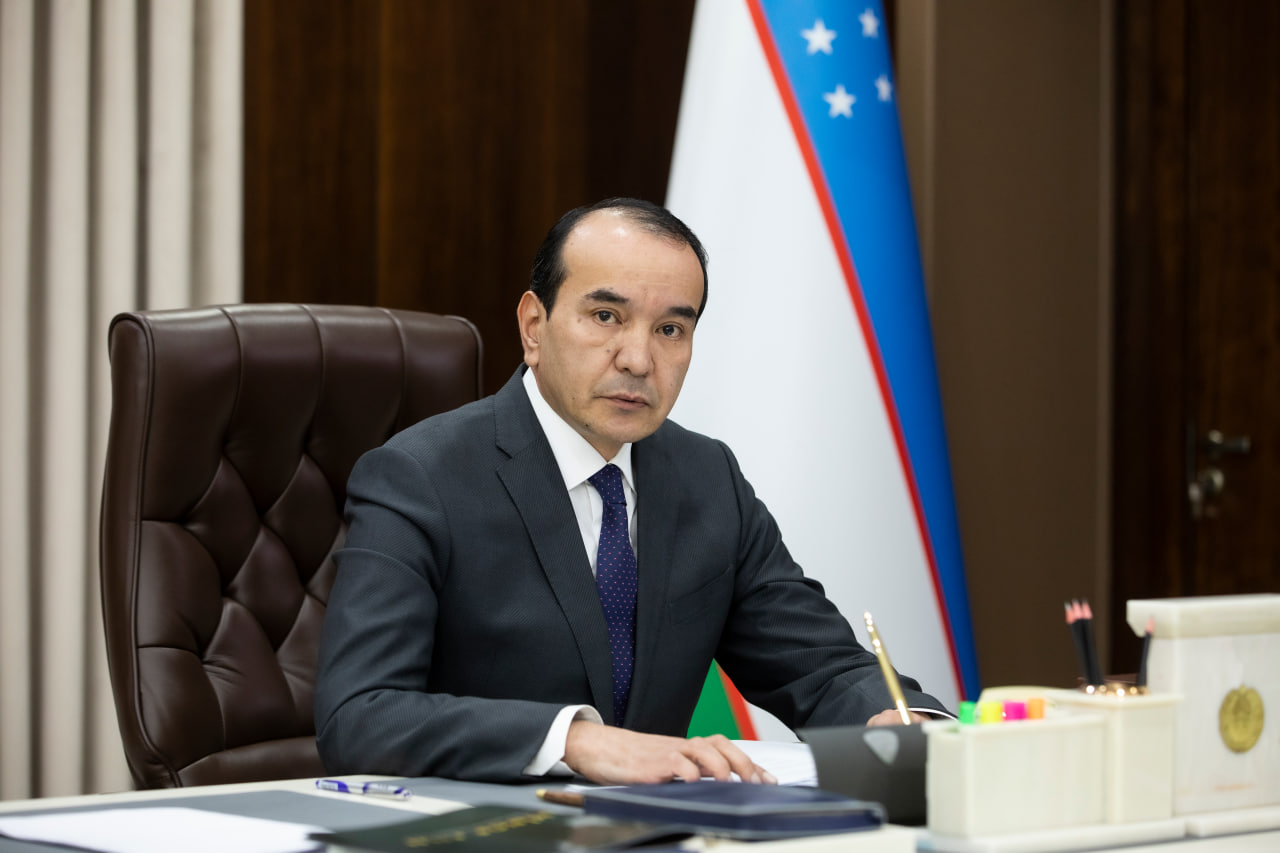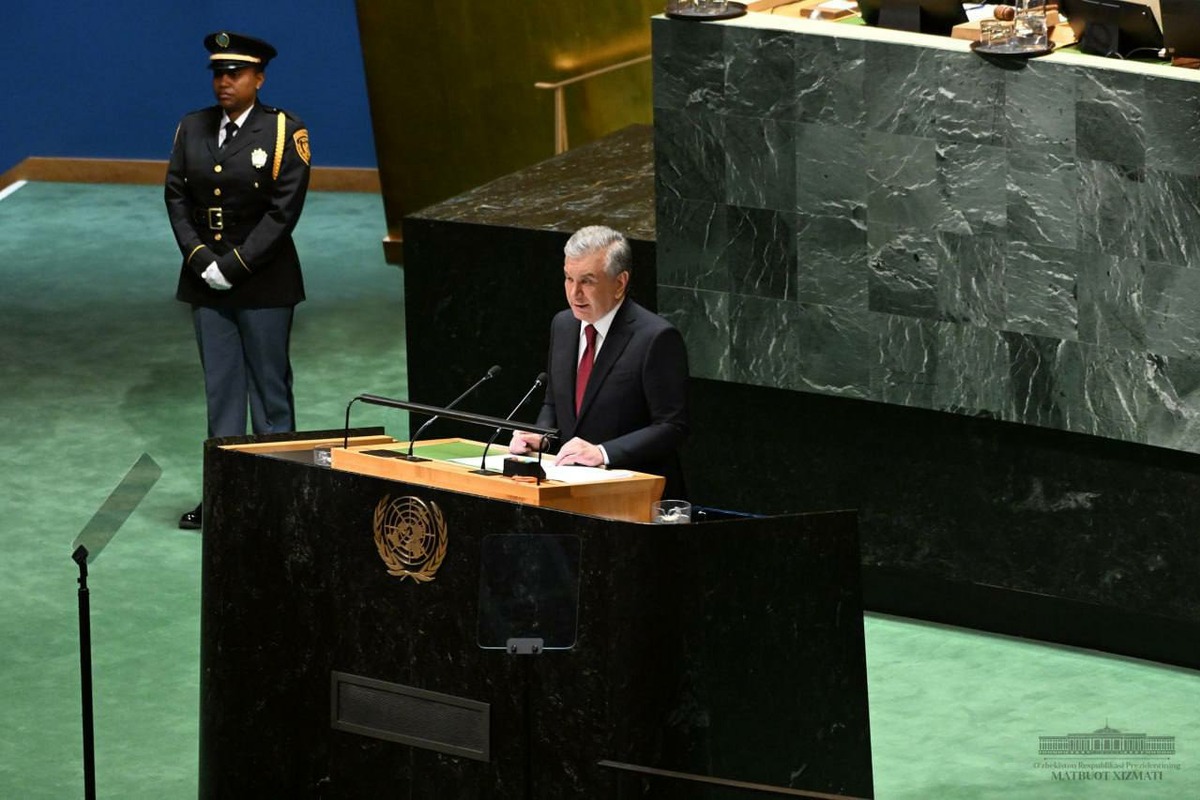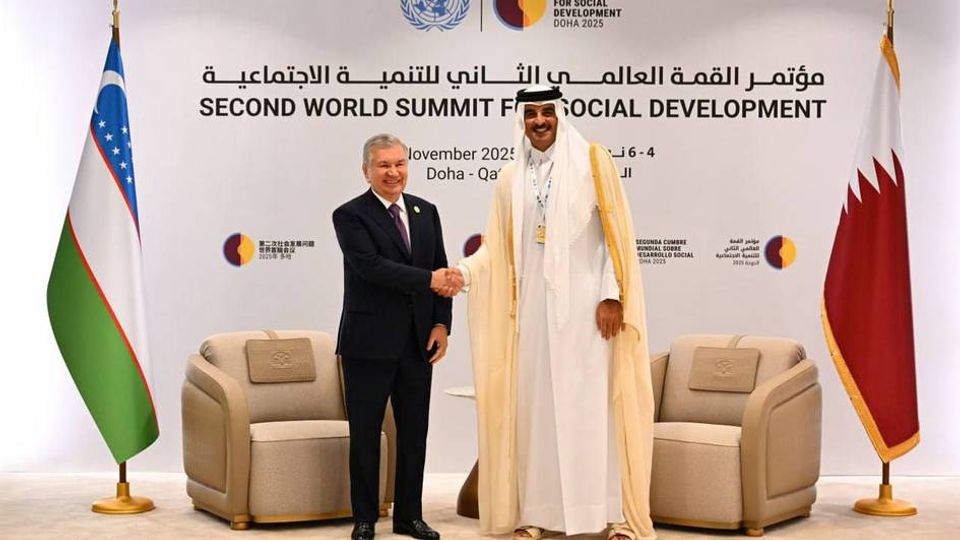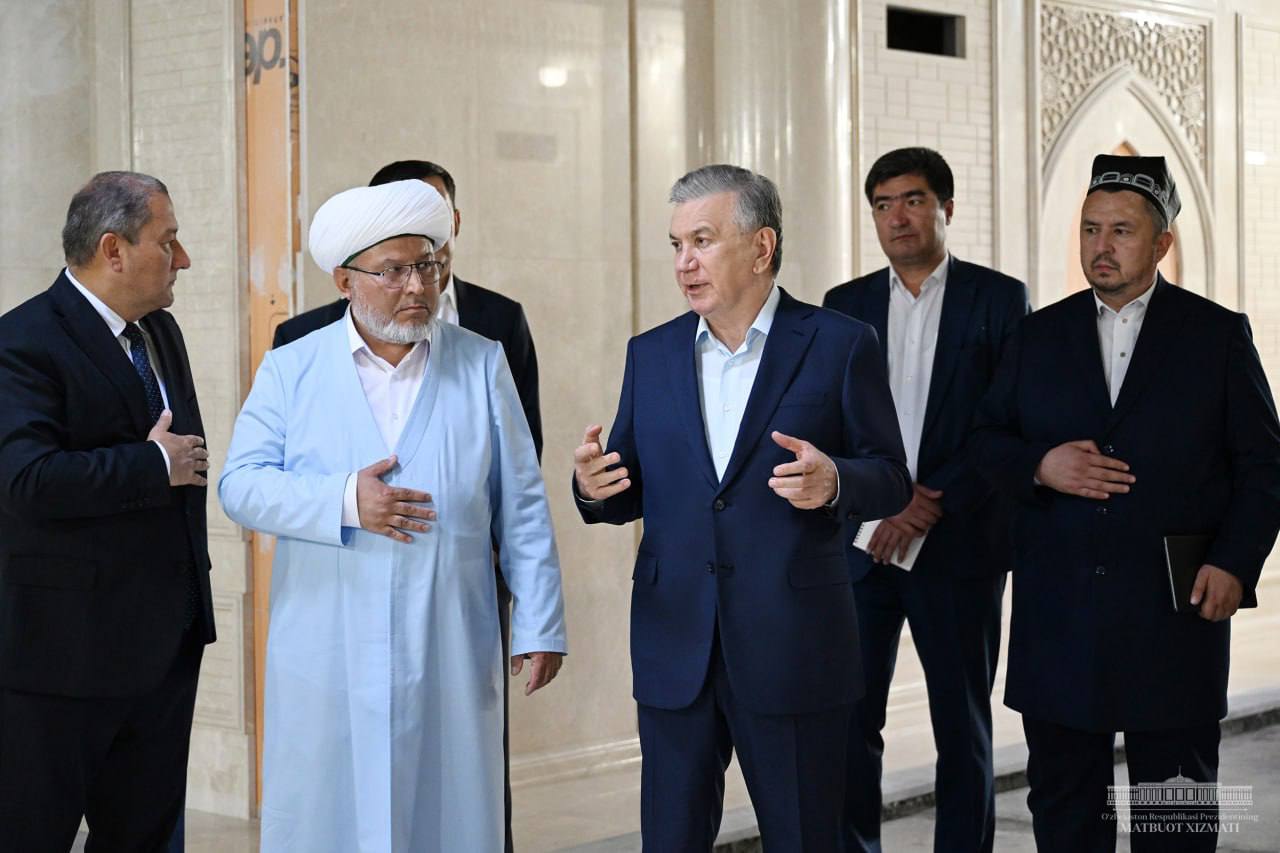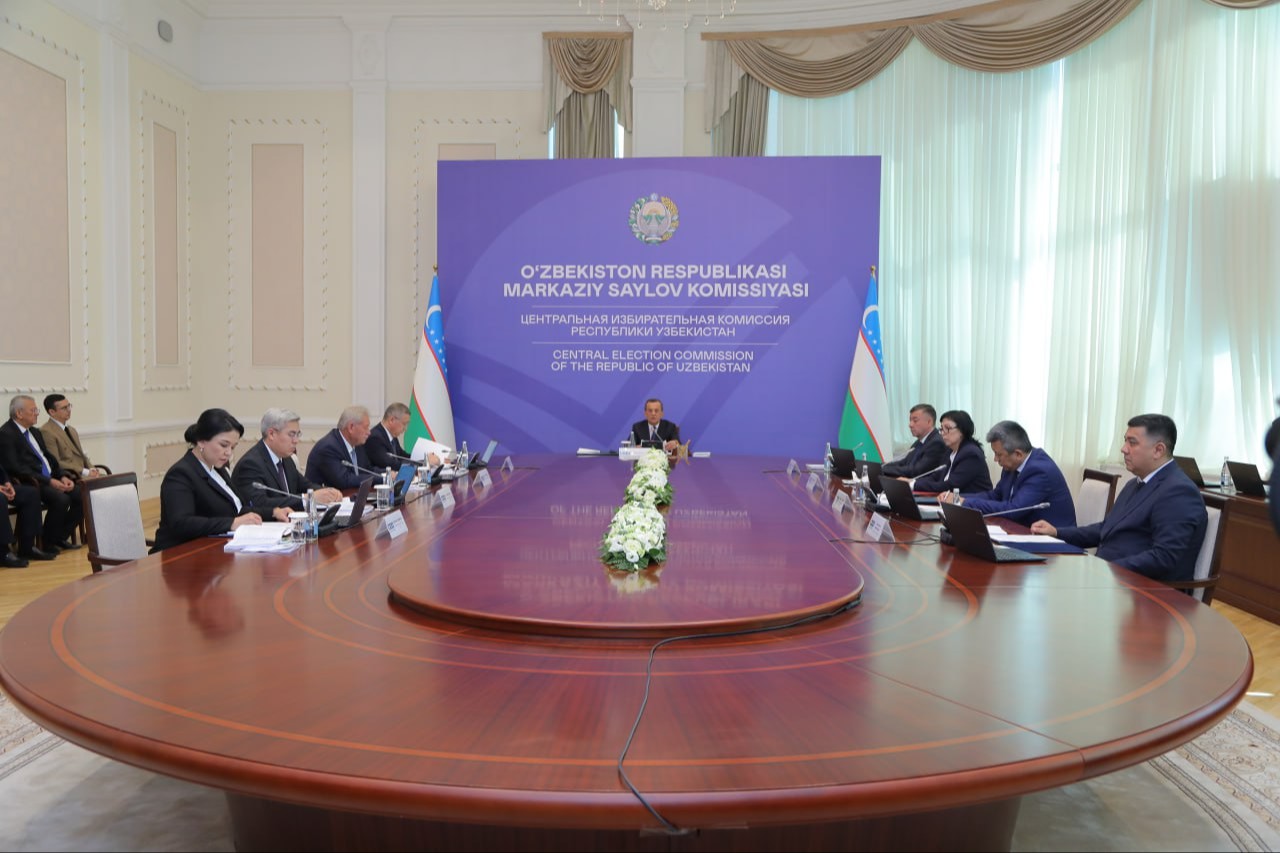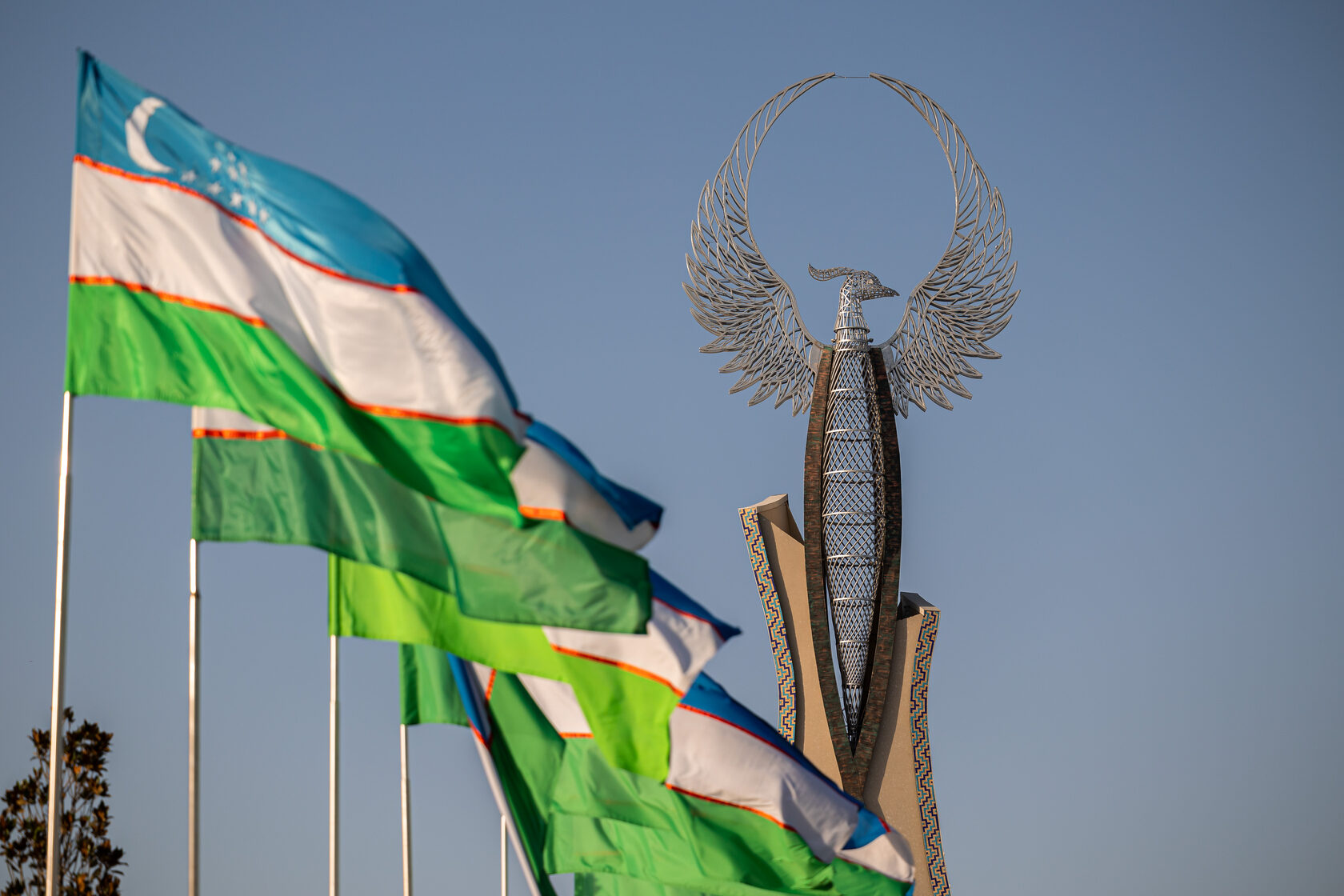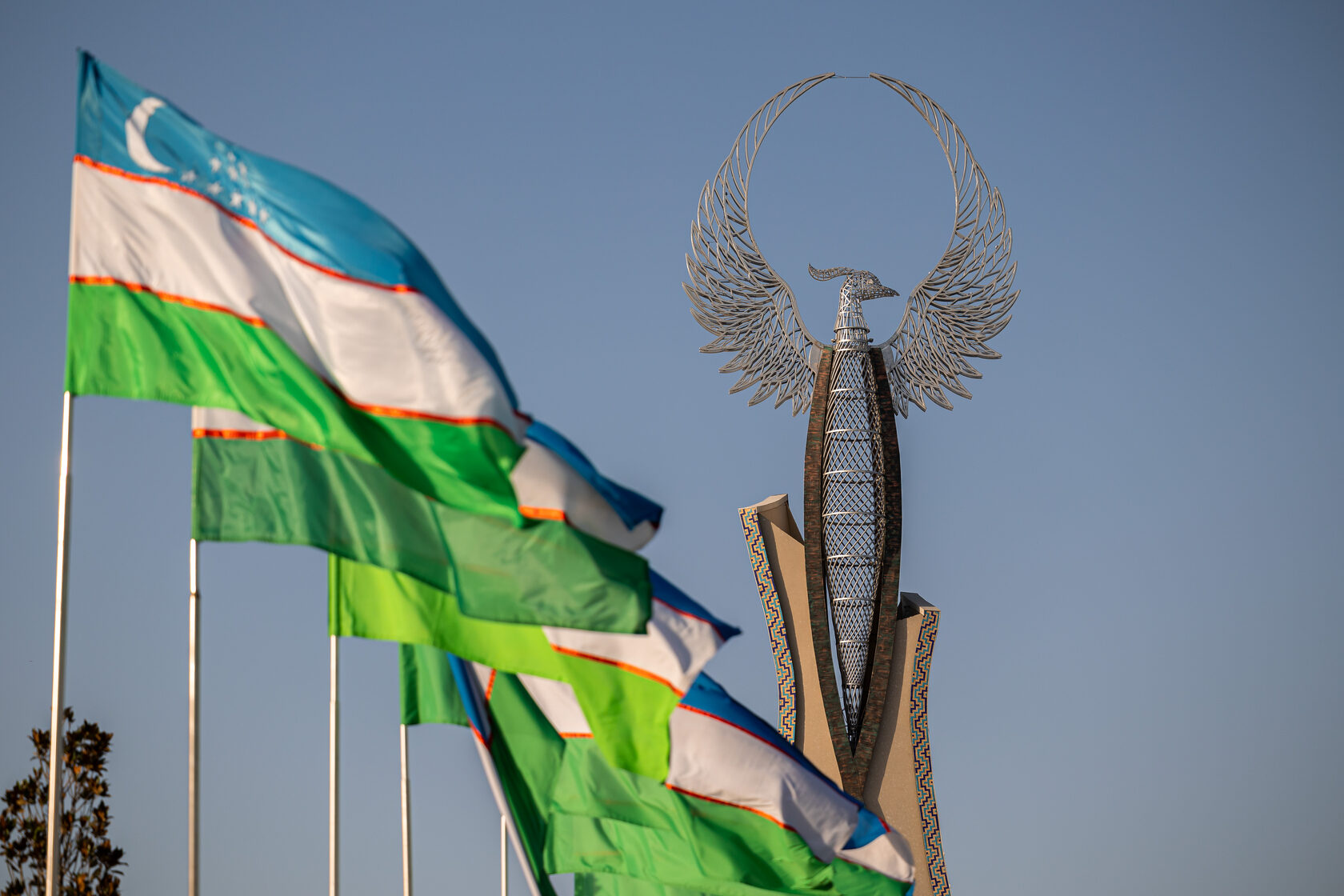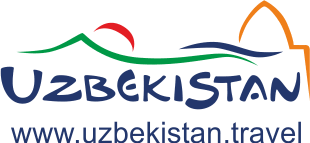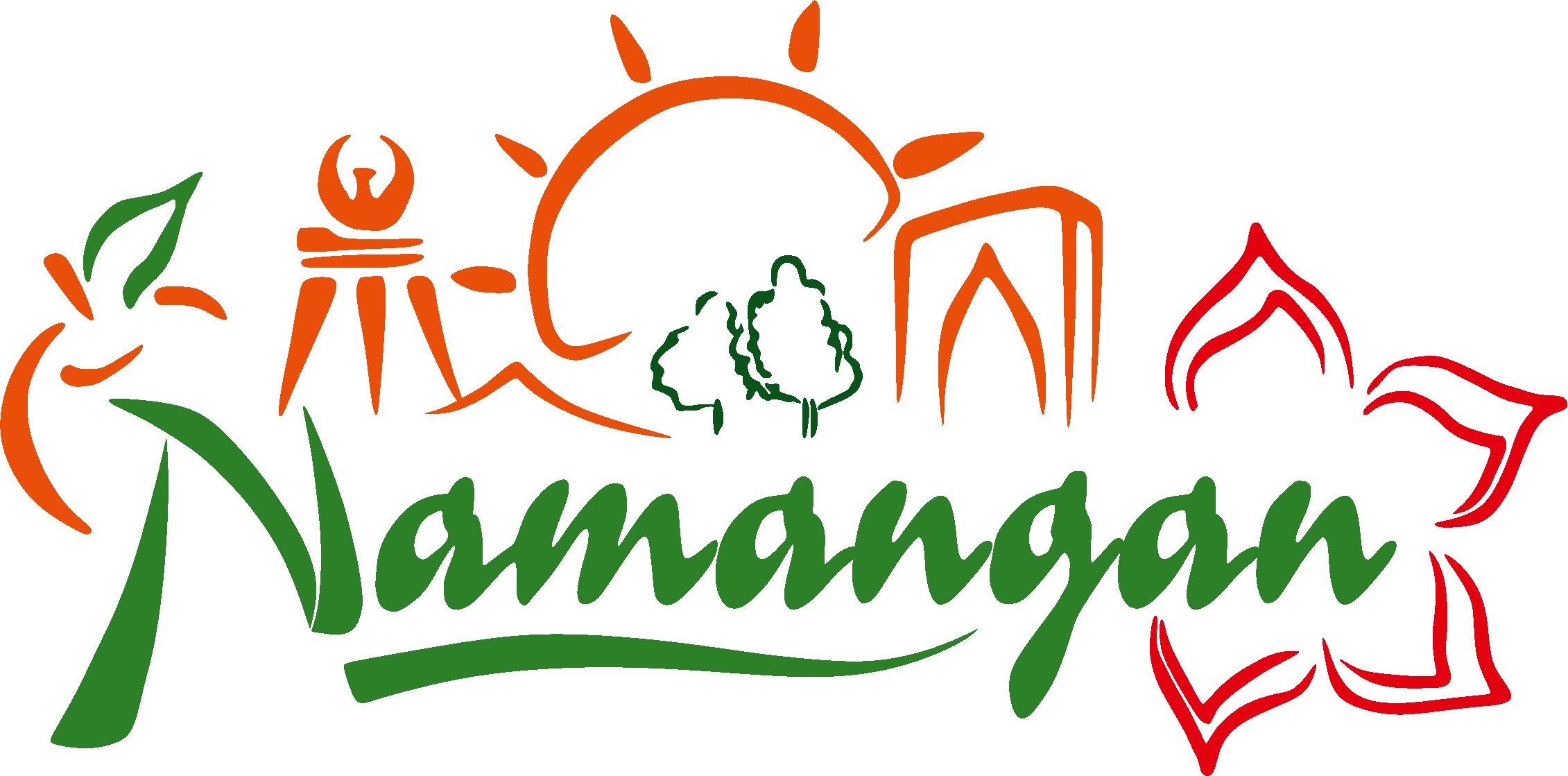Phone
Consular Issues
Phone
Uzbekistan news
We recommend
The principle of “New Uzbekistan - a social state” implies comprehensive support for the population
📅 29.07.2024
Social policy in our country contains a wide range of issues on poverty alleviation, job creation, and support for socially vulnerable groups of the population. Investments in human capital are both a contribution to the social and economic sectors of the country's development. Moreover, according to a study by the Institute of Macroeconomic and Regional Studies under the Cabinet of Ministers of Uzbekistan, improving the quality of human capital leads to an increase in the inflow of foreign direct investment by 0.51 percent.
Article 1 of the Constitution of the Republic of Uzbekistan in the new wording, adopted following the results of the national referendum, once again confirmed the commitment and orientation of the state to care for its citizens from the first days of their birth, regardless of their social status. It should be noted that the state did not come to this principle immediately, as the domestic social policy was formed step by step, i.e. in the process of long negotiations, permanent compromises and economic opportunities.
The enshrinement in the Constitution of the statement that Uzbekistan is a sovereign, democratic, law-based, social and secular State increases its social obligations.
It should be noted that a social state in the general sense guarantees quality education, qualified medical care, comprehensive support for families, children, women, the elderly and persons with disabilities, provides housing and employment for those in need, creates safe working conditions and reduces poverty.
All of the above-mentioned state guarantees began to be reflected in the last decade of our country, which entered the world history as New Uzbekistan.
First, the Strategy of Action on Five Priority Areas of Development of the Republic of Uzbekistan in 2017-2021 and the Strategy for the Development of New Uzbekistan for 2022-2026 identify as priority tasks: building a humane state by elevating human honor and dignity and further developing a free civil society; turning the principles of justice and the rule of law into a fundamental and necessary condition for the country's development; accelerating the development of the national economy and ensuring high growth rates; carrying out the development of the country's economy; and ensuring the development of the national economy.
Secondly, the Ministry of Employment and Poverty Reduction has been established, the Ishga Markhamat monocenters have been launched, the “iron” “women's” and “youth” notebook systems have been set up, one hundred percent pensions are paid to working pensioners, the Social Protection Strategy of the Republic of Uzbekistan has been approved, and the problem of poverty in the country has been recognized. Moreover, the post of assistant khokims has been introduced, who are responsible for poverty reduction, developing entrepreneurship, organizing jobs and increasing the incomes of citizens. Most importantly, a new system of caring for the population has been created.
President Shavkat Mirziyoyev chaired a video conference call on May 15, 2023 to discuss measures to reduce poverty and provide employment. Following the recognition of the existence of poverty in the country, a system to reduce it was introduced. At the beginning of last year, all districts in Uzbekistan were divided into five categories and given differentiated benefits based on the pace of socio-economic development. As a result, one million people have been lifted out of poverty.
Thirdly, education and medicine are the most important and comprehensive social spheres. In order to accelerate reforms and improve efficiency in these sectors, relevant project offices have been established.
Undoubtedly, investment in human capital is the best contribution to the future. In this regard, unprecedented reforms have been carried out in the area of continuous improvement of the system of continuous quality education and training of qualified personnel. As a result, preschool education coverage has increased from 27 to 74 percent, 11-year compulsory schooling has been resumed, the workload of school teachers has been optimized, and forced labor has been abolished.
Changes in the higher education system in recent years have also shown significant positive results. As a result, enrollment in higher education has increased from nine to 42 per cent, and the number of higher education institutions has grown from 77 to 212.
Our country pays great attention to the medical sphere, which directly affects the quality of life. Over the past seven years, the financing of the health care system has increased from 5.9 trillion to 33.5 trillion soums, i.e. six times. Hospitals are being equipped with modern equipment and new facilities are being built. In order to bring medicine closer to the people, on-site screening examinations are being conducted.
It should be noted that Uzbekistan is working on targeted support for socially vulnerable segments of the population. This is evidenced by the addition of a new wording to article 57 of the Constitution on State measures aimed at improving the quality of life of socially vulnerable categories, creating conditions for their equal participation in public and State life with other citizens, and expanding their opportunities to independently provide for their basic living needs.
One of the main innovations is article 42 of the Basic Law, which states that the minimum wage shall be determined taking into account the need to ensure a decent standard of living. From December 1, 2023, the minimum wage is equal to 1.05 million soums, while the cost of consumer expenditures is set at 568 thousand soums per person per month.
In addition, according to the Presidential Decision “On measures to further improve the system of social services and assistance to the population” of September 28, 2023, a new system of social assistance by the employees of the social service centers “Inson” of the National Agency for Social Protection has been introduced in 28 districts (cities) on a pilot basis since October 15 last year. The employees are responsible for keeping records and register of lonely, elderly and disabled persons in need of care, which helps to develop a plan of individualized social services by taking into account the degree of need for care. At the same time, assistance to the lonely elderly included in the Unified Register of Social Protection is provided on the basis of a contract.
Active Diplomacy of Uzbekistan: 2025 — From Dynamic Dialogue to Tangible Results
📅 28.12.2025
The year 2025 marked a stage of qualitative renewal and consolidation of Uzbekistan’s foreign policy positions. Amid a complex and ambiguous international environment characterized by rising geopolitical tensions, the transformation of global institutions, and intensifying competition for resources and markets, Uzbekistan, under the leadership of President Shavkat Mirziyoyev, consistently pursued an open, pragmatic, active, and proactive foreign policy. This approach not only helped preserve the stability of external relations but also infused them with new substantive content aligned with the country’s long-term interests and domestic development priorities.
As emphasized by the President of Uzbekistan, Shavkat Mirziyoyev, in his Address to the Oliy Majlis and the people on December 26, 2025, “in recent times the country has been becoming an international platform for dialogue where global issues are discussed.”
As an integral part of the large-scale socio-economic reforms underway in the country, the diplomatic strategy of New Uzbekistan was aimed at creating favorable external conditions for economic modernization, attracting foreign investment and tourists, expanding export potential, and strengthening humanitarian and cultural ties. The foundations of this foreign policy course remained the principles of openness, equal partnership, mutual respect, non-interference in the internal affairs of states, and strict adherence to international law.
Political dialogue at the highest level with prominent world leaders has reached a new stage and become regular. New agreements have been reached with the leaders of the United States, China, Russia, France, Italy, Turkey, South Korea, Japan, Malaysia and a number of Arab states. In 2025, the number of bilateral meetings at the level of heads of state and government exceeded 55, which indicates a growth in mutual trust with foreign partners.
A similar trend was observed in the development of intensive high-level political dialogue. Throughout the year, high-level Uzbek delegations carried out 172 visits to 93 countries, covering virtually all key regions of the world. Representatives of ministries, agencies, and regional administrations also played a substantial role in shaping the international agenda. With the support of diplomatic missions, they undertook around 300 official visits to more than 50 countries, bringing foreign relations to a more practical and results-oriented level.
Acting as an active host, Uzbekistan has become one of the centers of world diplomacy. This is clearly demonstrated by the fact that the country has hosted forums, assemblies and conferences of the Inter-Parliamentary Union, the United Nations Civil Service, the UNESCO General Conference, the International Climate Conference, the Tashkent Summit of the countries of the region and a number of other major events. Our country has hosted over 120 high-level foreign delegations, as well as about 300 delegations from regional authorities of foreign states. These contacts have contributed to the development of interregional cooperation, the establishment of direct links between business circles and the expansion of the legal framework for cooperation.
Central Asia traditionally occupies a special place in Uzbekistan’s foreign policy strategy. In 2025, this priority received further institutional development. Uzbekistan chaired the Consultative Meeting of the Heads of State of Central Asia, with the chairmanship implemented for the first time on the basis of a comprehensive standalone program. Its agenda covered economic cooperation, transport connectivity, environmental issues, rational use of water resources, and humanitarian exchanges.
The organization of more than twenty major events and the holding in Tashkent of a summit of Central Asian leaders—historic in its outcomes and chaired by President Shavkat Mirziyoyev—became the culmination of regional diplomacy for the year. These developments confirmed the region’s aspiration to deepen mutual trust and pursue joint development.
Today, we can say with confidence that our vast region is becoming a unified, fully-fledged player in world politics for the first time in a long time. This is evidenced by the growing attention of the international community and the changed perception of the region on the global stage. A striking example is the development of the ‘Central Asia Plus’ formats, which in 2025 were filled with new concrete practical content. The summits with the European Union, China, Russia, the United States and Japan clearly demonstrated the region's increased role in global politics and strengthened its position as an area of stability, predictability and mutually beneficial cooperation.
An important direction of Uzbekistan’s foreign policy in 2025 was the further expansion of its geographical reach. Alongside traditional partners in the CIS, Europe, and Asia, contacts with countries in Eastern Europe, the Middle East, Africa, and South America were intensified. The first-ever bilateral high-level engagements with Slovakia, Serbia, Jordan, Paraguay, and several other states testified to the consistent expansion of Uzbekistan’s international presence. As a result, the total number of countries with which Uzbekistan maintains diplomatic relations reached 165.
Against this backdrop, several events of strategic significance had a profound impact on Uzbekistan’s foreign policy positioning in 2025. The signing of the Enhanced Partnership and Cooperation Agreement with the European Union and President Shavkat Mirziyoyev’s visit to Brussels marked a transition in relations with the EU to a qualitatively new level. The agreement established a solid legal framework for deepening political dialogue, expanding trade and economic ties, attracting investment, and developing cooperation in sustainable development, the green economy, and digitalization, while also reflecting the high assessment by European partners of Uzbekistan’s ongoing reforms.
Continuing its course toward expanding and deepening engagement with key global centers of power, Uzbekistan steadily developed relations with the United States. A landmark event in this regard was the successful outcome of the “C5+1” summit held in Washington in November, which brought together the leaders of the United States and the Central Asian states. Uzbekistan’s role in this format has been widely recognized by international experts and policymakers as that of a key initiator of regional cooperation and a responsible partner of the United States in the areas of sustainable development, security, economic interaction, and humanitarian ties.
Equally significant was the participation of the President of Uzbekistan in the session of the United Nations General Assembly. The head of state’s address from the UN’s main international platform reaffirmed the country’s commitment to multilateralism, peaceful dialogue, and the collective search for solutions to pressing global challenges.
In 2025, four resolutions initiated by Uzbekistan were adopted by the UN General Assembly, reflecting the country’s priorities in sustainable development, regional security, and humanitarian cooperation. In addition, Uzbekistan was elected to several authoritative UN bodies, underscoring the growing trust of the international community.
A historic event of the year was the holding of the 43rd session of the UNESCO General Conference in Samarkand. For the first time in forty years, this forum took place outside Paris, representing unprecedented recognition of Uzbekistan’s cultural, historical, and civilization significance. For several days, Samarkand became a global platform for dialogue on education, science, and culture, strengthening the humanitarian dimension of Uzbekistan’s foreign policy and its image as a center of intercivilizational interaction.
Alongside active political diplomacy, economic diplomacy developed dynamically in 2025, firmly establishing itself as one of the key instruments of the country’s foreign policy. Systematic work within the framework of “Ministry of Foreign Affairs — diplomatic missions — sectoral agencies — regions” yielded tangible results in attracting foreign investment and expanding external economic ties. Over the first ten months of the year, USD 34.4 billion in foreign investment was mobilized with the support of diplomatic missions.
The effectiveness of Uzbekistan’s economic policy received high praise from international financial institutions and rating agencies. In 2025, Fitch Ratings and S&P upgraded the country’s sovereign credit rating from “BB-” to “BB,” while Moody’s revised its outlook from “stable” to “positive,” reflecting growing confidence in the economy and the sustainability of ongoing reforms.
The intensification of foreign economic activity also contributed to the growth of trade indicators. Over the first eleven months of 2025, Uzbekistan’s foreign trade turnover reached USD 72.7 billion, with exports amounting to USD 30.8 billion—an increase of USD 6.6 billion compared to the same period of the previous year. A significant reduction in the trade deficit was the result of targeted efforts by diplomatic missions to diversify markets and promote domestic products abroad.
Tourism, as an element of “soft power,” played an important role in shaping Uzbekistan’s positive international image in 2025. Over eleven months, the country was visited by 10.7 million foreign tourists, with more than one million foreign visitors welcomed each month on average. Active participation in international exhibitions, large-scale promotional events abroad, and the hosting in Tashkent of the first “Central Asia–European Union” Tourism Forum helped strengthen Uzbekistan’s position as one of the most promising tourist destinations in the region.
Considerable attention was also devoted to protecting the rights and interests of Uzbek citizens abroad, an important humanitarian dimension of foreign policy. From January to September 2025, more than 385,000 consular actions were carried out, including the return of unlawfully confiscated documents and the recovery of unpaid wages, alongside the implementation of programs facilitating the return of compatriots to their homeland. In parallel, digital consular services were improved, the geography of visa-free and simplified entry for Uzbek citizens was expanded, and cooperation with diaspora communities was strengthened.
In summary, the outcomes of 2025 clearly demonstrate that Uzbekistan’s foreign policy has reached a high level of maturity, consistency, and effectiveness. The country not only strengthened its positions on the international stage but also successfully leveraged diplomatic instruments to support domestic development, enhance investment attractiveness, and improve the quality of life of its citizens. Uzbekistan concludes the year with an expanded network of partnerships, a robust legal and contractual framework, and a clear vision for the future—remaining open to the world and looking ahead with confidence and optimism.
Dunyo IA
President of Uzbekistan points to the need of enriching partnership with the UAE
📅 16.12.2024
The issues of further expansion of practical interaction and promotion of investment cooperation projects were discussed at the meeting between President of the Republic of Uzbekistan Shavkat Mirziyoyev and the delegation of the United Arab Emirates comprising Minister of Industry and Advanced Technologies Sultan Ahmed Al Jaber and Minister of Energy and Infrastructure Suhail Mohammed Al Mazroui.
At the beginning of the conversation, Sultan Al Jaber conveyed to the Head of our State sincere greetings and best wishes from the President of the Emirates Sheikh Mohamed Al Nahyan, Prime Minister of the country, Emir of Dubai Sheikh Mohammed Al Maktoum and Vice President Sheikh Mansour Al Nahyan.
In the course of the meeting, the current highest level of Uzbek-Emirati multifaceted relations was noted with special satisfaction. The volumes of mutual trade turnover, the number of joint ventures and the frequency of flights are growing. The portfolio of ongoing and promising projects with the participation of leading Emirati companies in Uzbekistan reaches $20 billion.
Green energy is the driving force behind bilateral cooperation. Today, a 500 megawatt wind farm was commissioned in Navoi region, a project implemented by Masdar.
In general, in recent years with the participation of this company power generation facilities with total capacity of 1.5 gigawatts have been commissioned in our country.
Particular attention was paid to the early preparation and implementation of major investment projects in the energy, oil and gas and chemical industries, mining, water supply, household waste processing and other fields.
The importance of continuing productive contacts at all levels and careful preparation for the upcoming high-level events was noted.
THE EDUCATIONAL POLICY OF NEW UZBEKISTAN IS OPENING NEW HORIZONS IN THE REGION
📅 28.11.2025
We are the luckiest children of our people. We are fortunate to see the days dreamed of by our Jadid ancestors and to build the future they desired. During the events of the seventh Consultative Meeting of the Heads of State of Central Asia, I was once again convinced of this.
In recent years, Central Asia has acquired a new image on the world political map. Today, it is recognized that the countries of the region are not competitors, but reliable partners moving together on the path of development and cooperation. Consequently, other regions and powerful states are seeking to engage with us, envisioning a future in harmony with the spirit of Central Asia. This is not without reason. Because in the international arena, various conflicts and the pursuit of solely material interests have intensified. In such a situation, thanks to the political will and wise decisions of our President, a completely new policy, inherent to our people—one of openness and magnanimity—has gained priority in our region. All Central Asians rejoice in this. Why? Because our peoples have lived as neighbors, in-laws, sharing joys and sorrows as one nation.
In awakening the spirit of Central Asia, our President first took the path of bringing our peoples closer together. We wisely used the power of literature and art to elevate relations to a new stage. In particular, various events and festivals were organized among cultural representatives of our countries. As part of state visits, performances by art and culture representatives and grand concerts have become commonplace.
Our President has turned the gifting of books to his colleagues into a tradition. At the time, we understood this only within the framework of cultural ties. Time itself shows that the path chosen by our President is the way to reach the hearts of the people!
After all, the peoples of Central Asia consider Khazrat Navoi their ancestor. Likewise, we also love Jami, Fuzuli, Makhtumkuli, and Abai just as we do Bobur or Alisher Navoi. We value the epic of Manas as if it were our own, and we read the works of Aitmatov more than anyone else. This alone indicates that our peoples have lived for centuries as close as flesh and nail. The leader of our state elevated such important aspects to the level of state policy. This opened a path to the hearts of our peoples. As a result, the seventh Consultative Meeting of the Heads of State of Central Asia was rich in historic events. Importantly, following its conclusion, very important decisions for the future of the region were adopted.
In particular, a concept for regional security and stability in Central Asia was adopted. In today's global world, security is of paramount importance. In such a situation, one cannot develop in isolation. Where there is peace, there is also stability. That is why the new Central Asia is seen on the international stage as a peaceful and stable zone. Our region has not only natural resources and economic potential but also a sufficient level of human capital. At a time when mutual conflicts and economic blockades are intensifying in various parts of the world, it is also true that Central Asia's ability to maintain stability is seen as a lifeboat for others.
Maintaining this stability and achieving economic growth by utilizing its opportunities is not easy. Anyone who closely observes the working regime of our President understands this correctly. Because the leader of our state works day and night to strengthen international ties. From the world podium, he is advancing not only national but also universal human interests. He calls for resolving any conflict and dispute through peaceful, diplomatic means.
It is these calls, aspirations, and initiatives that have awakened the spirit of Central Asia today. The entire region has unanimously decided to safeguard security and stability together. As our President put it, we have deeply understood that our strength is in unity, and our path to success is in friendship and cooperation.
In recent years, relations in the "Central Asia Plus" format have expanded. Our region is demonstrating a unified position on the international stage. At the same time, it is actively integrating into the world economy. Investment attractiveness is growing, export opportunities to third markets are expanding, and transit potential is increasing. For example, last year, the mutual trade volume between our countries reached 10.7 billion US dollars. The total volume of investments attracted to our region increased by 17 percent.
Further enhancing economic relations and correctly assessing the rapidly changing, unpredictable geopolitical processes is an urgent task. In this sense, it is gratifying that at the Consultative Meeting, a catalog of threats to Central Asian security and measures to prevent them for 2026-2028 were outlined.
The Consultative Meeting of the Heads of State of Central Asia was established on the initiative of our President. The leader of our state chaired its seventh meeting. During this period, our cooperation has been highly effective. To further enhance the potential of cooperation, over 20 major events were held. A forum for inter-regional cooperation at the level of deputy prime ministers was launched. Likewise, meetings of ministers were held for the first time. In particular, ministers of geology, industry, agriculture, ecology, and culture held meetings.
Due to such aspects, we are right to say that a new era of the Consultative Meeting has begun. Just one example: now, member states will engage in separate, individual cooperation in each sector within the Consultative Meeting. We were convinced of this once again at the ministerial meetings.
Within the framework of the international congress on "Central Asia: Common Spiritual and Educational Heritage – Common Future" at the Islamic Civilization Center, we held our first meeting with the culture ministers of Central Asia and Azerbaijan. Various issues of multilateral cooperation were discussed. We discussed issues of cooperation in various fields of culture and art. We exchanged views on the current state of regional cultural cooperation and future plans.
Our peoples have one thing in common. That is, people listen more to elders, to individuals respected by the community. They follow them. Precisely this aspect is considered our unique strength, unlike other regions. Therefore, for the future, vital issues were raised about expanding cultural exchange among cultural figures. As a result, we reached agreements on expanding regional cultural cooperation.
Mutual respect and magnanimity among peoples do not appear by themselves. It must be admitted that the human psyche has a strong tendency towards negative information. In today's global world, we see enough examples of this. Our President, deeply understanding this very aspect and analyzing it thoroughly, created the opportunity for cultural workers to strengthen such ties. I believe that cultural workers, and intellectuals in general, are responsible for further developing peace and mutual understanding in the region. It is precisely we who must prepare and present to our peoples the positive content that will lead to this. In this sense, we united around a common idea to hold joint events and festivals in the fields of art, literature, cinema, theater, and music. Such events remind us of ourselves once again. They sing the universal ideas, friendship, and magnanimity promoted by Navoi, Jami, Fuzuli and Makhtumkuli, Abai and Aitmatov, which are the cause for awakening the spirit of Central Asia today.
The gratifying aspect is that we will also expand joint projects for the study, restoration, and digitization of cultural heritage. Furthermore, we will develop exchange programs among young creators. We reached an agreement on organizing seminars, conferences, and summer schools. We also exchanged views on strengthening cooperation in training and advanced training in the field of culture and art. Importantly, positive opinions were expressed on developing a "Central Asian Cultural Brand."
Observing this process, the meetings and agreements at the level of state leaders, I felt that today Central Asia has truly become a single region, a unified force. Our peoples have gone through many trials to reach this day. We can see this in the example of our Jadid ancestors. Thankfully, the river that flows, flows on. Our ancestors always called the people of the world to enlightenment, friendship, and kindness. Today, we, as a single region, continue this eternal tradition. It is gratifying that the leader of our state is wisely using these values of ours not only for our country but also for the benefit of the whole world. This was clearly evident in the initiatives put forward by our President at the Consultative Meeting of the Heads of State of Central Asia.
In particular, an initiative was put forward to establish an Council of Elders, comprising respected public figures with life experience and authority, based on the values and traditions of people's diplomacy. At the same time, it was emphasized that further improving cooperation mechanisms and the contractual-legal basis is of fundamental importance. Especially, the initiative to transform the Consultative Meeting into the strategic format of a "Central Asian Community" became the words in all our hearts.
Because now Central Asia is not just a region, but is strengthening its place on the world political map as a single voice, a united force. That is why our President emphasized in his speech at the seventh Consultative Meeting of the Heads of State of Central Asia: "I am fully confident that today we are on the threshold of a period of historical awakening of our region as the New Central Asia."
Precisely for this reason, developed countries are eager to cooperate with us. This is a great opportunity for the countries of the region. Using it wisely depends on our ability to protect our unity, friendship, and interests in a coordinated manner. In New Uzbekistan, it is recognized as a people-oriented policy precisely because such important aspects are always the focus of attention. The scale of countries wishing to cooperate with us confirms how sincere these recognitions are. There are two important reasons for the strong aspiration of developed countries towards New Uzbekistan. First, New Uzbekistan has become known as a state promoting the ideas of peace and humanity.
Here, a vital truth must be stated. No matter how a person may appear in a hostile guise, they still strive to live for peace and friendship. Countries are the same. They may engage in various conflicts for their own interests. But deep down, they desire peace and prosperity. The foreign policy position of New Uzbekistan offers guarantees of this peace and friendship.
The second important point is that thanks to the people-centered foreign policy, Central Asia has achieved unity. Now it is not seen as a field for labor or natural resources. Rather, it is seen as a new force with broad economic power in the international arena. During the Consultative Meeting, the leaders of the countries were at the Islamic Civilization Center. Our President emphasized that this center is a unique platform for creating scientific knowledge and ideas, conducting research, and popularizing our common cultural-historical heritage. Therefore, it is natural for the center to become a haven for the scientific and spiritual elevation of youth.
We certainly have grounds for saying this with full confidence. At the Consultative Meeting, our President proposed to regularly organize the first International Congress dedicated to spiritual heritage and enlightenment ideas. According to it, the congress will be held annually in the country chairing the Consultative Meeting.
All this shows that the countries of Central Asia are uniting not only because of economic or security issues, but because they are familiar with enlightenment. We know well that relationships built solely on material interests are fragile. In our region, however, live peoples with a single history, a common past. This is the reason for a unity that surpasses any material interests. That is why, at the meetings of state leaders, issues of culture and enlightenment always find a place on the agenda. This evokes boundless pride and honor in our hearts. At the same time, it also imposes the responsibility of being a generation worthy of such honorable days. For, at a time when the educational policy of New Uzbekistan is opening new horizons in Central Asia, being worthy of it is the duty and debt of every child of this land
Uzbekistan’s Experience in Poverty Reduction and the Formation of a New Social Protection Model
📅 17.10.2025
Since 2017, President Shavkat Mirziyoyev’s administration has pursued a sweeping reform agenda, liberalizing the economy while strengthening social welfare. These reforms are enshrined in new policies and the 2023 Constitution, which explicitly defines Uzbekistan as a “social state” responsible for ensuring employment and reducing poverty. The government’s national strategy (“Uzbekistan–2030”) even set a target of halving poverty by 2026. In short, Uzbekistan’s policy framework has shifted toward the combined goals of economic growth and inclusive social protection.
By 2023 the new National Agency for Social Protection (NASP) and community “Inson” service centres were delivering aid to roughly 2.3 million needy families – about a four-fold increase from 2017. Pensions and basic benefits were also raised: for instance, pension and disability payments in real terms are now about 1.5 times higher than before the reforms.
Community service is delivered through Inson centers, one-stop offices in each locality that help citizens apply for benefits and services. These “Inson” centres provide personal assistance with applications and information, reflecting a shift to integrated, client-oriented support. Relatedly, a new registry of persons requiring care has been established (by 2023 it contained ~17,800 profiles) to manage support for the disabled and elderly; each case is reviewed quarterly so that aid can be adjusted as needed. Together, these digital tools and organizational changes – one-stop “Inson” centers, a unified registry, targeted lists and case management – represent a modern social protection architecture far beyond Uzbekistan’s previous fragmented system.
International partners have closely supported and evaluated these reforms. The World Bank has played a leading role: it delivered roughly $2.1 billion through policy-based loans (2018–2021) to finance structural reforms in jobs, governance and social policy. In mid-2024 the Bank approved an additional $100 million “INSON” project to improve social care for vulnerable groups. This project will establish more than 50 community-based social service centres and expand services to some 50,000 people (including older persons, disabled, and children).
Within the framework of the “From Poverty to Prosperity” program, launched on 1 November 2024, families receive support across seven key dimensions:
- Ensuring stable employment and achieving higher income levels;
- Access to education and vocational training;
- Access to guaranteed state healthcare services;
- Access to social services;
- Improvement of housing conditions;
- Development of mahalla (community) infrastructure by the state;
- Direct engagement and dialogue with public sector representatives.
More than 600,000 families have gained access to 1.3 million social services aimed at employment and income growth. Members of these families have also benefited from over 2.2 million guaranteed healthcare services, directly contributing to their sustainable participation in the labor market.
Expanding Social Care Provision
For individuals requiring continuous care, a new model of service provision through private providers has been introduced. These services include household assistance, home- and field-based care, medical and social rehabilitation, and personal assistant support. Currently, 13,800 individuals — representing 76% of all those in need of care — receive such services from the private sector.
According to the Presidential Decree of the Republic of Uzbekistan, by 2030 the number of recipients of social services is expected to reach at least 3 million citizens annually, while the share of services provided by the non-state sector will rise to 30%. This approach fully aligns with the principles of the social and solidarity economy.
The programs implemented by the National Agency for Social Protection are characterized as accessible, effective, and oriented toward sustainable economic development.
- Accessibility
As part of the “From Poverty to Prosperity” program, a National Registry of Poor Families has been established. The identification of households and decisions regarding their inclusion are made directly at the community (mahalla) level. As of today, 667,000 families, comprising approximately 2.8 million individuals, have been registered. This provides a comprehensive understanding of their living conditions and the opportunities for poverty reduction.
- Effectiveness
In the first nine months of the current year, the average per capita income among registered families has nearly doubled, rising from 174,000 soums (~USD 14) to 338,000 soums (~USD 27) per month. Furthermore, 73,000 families that previously had no income now earn official wages. During the same period, 150,000 families have successfully escaped poverty, with 105,000 (70%) doing so primarily due to increased formal employment income.
- Sustainability
To ensure targeted support, families are categorized into three groups:
- Red – households with persons with disabilities requiring care, as well as families without a breadwinner or headed by a single parent;
- Yellow – families with employable members but lacking stable income and professional skills;
- Green – families that have exited poverty but remain at risk of falling back.
This classification enables the application of differentiated measures: “red” families receive priority care and social support; “yellow” families are targeted with employment and training programs; and “green” families benefit from measures aimed at preventing a return to poverty.
Within this framework, the development of a “care economy” has emerged as a key priority. The Agency has introduced daycare services for children with disabilities and the “Step into an Active Life” program for older persons. These initiatives enable family members to participate in the labor market, thereby activating previously unpaid caregivers.
Investing in Human Capital
Particular attention is given to children from low-income families. The state subsidizes up to 90% of the costs associated with their education and development. In 2025, 125,000 children from poor households gained preferential access to preschools, demonstrating how social protection systems can make an indirect yet significant contribution to poverty reduction.
In conclusion, the programs implemented by the National Agency for Social Protection go far beyond material support. They create enabling conditions for income generation, employment, and human capital development, thereby contributing directly to the sustainable economic growth of the country.
Olima Almatova Qorabekovna, a resident of “Ezgulik” makhalla, Buka district, Tashkent region, who received support from the Agency, said:
“My spouse worked at the mining combine for forty years, but after he became ill, he could no longer continue. For his sake, I took on whatever jobs people offered me. When the doctors suggested placing stents in his heart arteries, I refused, saying: ‘Whatever help you can give, give it to my family. I’ve lived my life, I am already sixty-seven. I’ve seen so much — whatever comes, I will accept it. I don’t need stents. I only ask that you give a little help to my family.’
When support arrived under the President’s decision, I cannot express how happy I was. I said: ‘Oh God, there really is someone who came to open my door.’ They came and extended a helping hand. We planted cucumbers and tomatoes, and soon money began to come in. We have already earned income three times. So much support has reached us, and we are deeply grateful to our President. Feeding even one family is difficult, yet he is taking care of millions. For those who are struggling and in need, such help gives strength, brings joy, and inspires them to move forward. One can hardly imagine just how powerful that is.”
In conclusion, the programs implemented by the National Agency for Social Protection go far beyond material support. They create enabling conditions for income generation, employment, and human capital development, thereby contributing directly to the sustainable economic growth of the country.
President of Uzbekistan to participate in the 80th session of the United Nations General Assembly in New York
📅 22.09.2025
On September 20-24, President of Uzbekistan Shavkat Mirziyoyev will pay a working visit to the city of New York to attend the events of the 80th jubilee session of the United Nations General Assembly.
According to the press service of the Head of our state, President of Uzbekistan will deliver a keynote address on the first day of organizing the general debate of the UN General Assembly plenary session.
It’s noteworthy that during the current jubilee session of the UNGA topical issues of ensuring global security and stability, achieving Sustainable Development Goals, reforming the system of the UN and international financial architecture, combatting the consequences of climate change and other modern challenges, will be reviewed.
On the sidelines of the summit, the Leader of Uzbekistan will hold talks with the UN Secretary-General António Guterres, heads of foreign states and governments, leaders of authoritative international financial institutions.
In the framework of the business program in the United States, it’s planned to hold meetings and events with participation of the leading American companies and financial-investment structures. It’s planned to sign a package of new agreements and contracts.
Dunyo IA
Uzbekistan-Qatar: A Strategic Partnership Focused on the Future
📅 06.11.2025
On November 3, President of Uzbekistan Shavkat Mirziyoyev, at the invitation of Emir Sheikh Tamim bin Hamad Al Thani, arrived in Qatar on a working visit to participate in the Second World Summit for Social Development.
Over the years of independence, Uzbekistan and Qatar have progressed from establishing diplomatic relations to forming a comprehensive strategic partnership based on trust, mutual respect, and common interests in the political, economic, and humanitarian spheres.
Qatar recognized Uzbekistan's independence on December 30, 1991, and diplomatic relations between the two countries were established on November 27, 1997. In recent years, the intensity of contacts at the highest levels has significantly increased. A milestone event was the signing of the Strategic Partnership Agreement in Tashkent in April 2024, which solidified a new level of cooperation between the two countries. This document outlines priorities for expanding cooperation in investment, energy, transport, education, and culture.
In June and December 2023, Emir Sheikh Tamim bin Hamad Al Thani visited Uzbekistan, and in October of the same year, President Shavkat Mirziyoyev made a reciprocal state visit to Doha. These meetings marked a new stage in the development of bilateral interactions, giving the relationship between Tashkent and Doha a strategic direction.
Dialogue at the highest level continued within the framework of major international forums, such as the Summit of the Conference on Interaction and Confidence-Building Measures in Asia, the "Central Asia – Cooperation Council for the Arab States of the Gulf" summit, and other global events.
Evidence of the intensification of cooperation was the opening of the Embassy of Qatar in Tashkent in May 2023 and the Embassy of Uzbekistan in Doha in December of the same year. These steps marked a transition to a qualitatively new level of political and diplomatic presence.
An important milestone in the political dialogue was the visit of the Prime Minister and Minister of Foreign Affairs of Qatar, Sheikh Mohammed bin Abdulrahman Al Thani, to Uzbekistan in April 2024. During the visit, the Qatari official was received by President Shavkat Mirziyoyev, where a wide range of issues were discussed, from strengthening political dialogue and expanding investment cooperation to partnership in the energy, transport, education, and culture sectors.
While in Tashkent, Sheikh Mohammed bin Abdulrahman Al Thani also held talks with Uzbekistan’s Minister of Foreign Affairs Bakhtiyor Saidov. During the meeting, the parties confirmed their mutual interest in further deepening cooperation between their foreign ministries, including through regular political consultations.
In turn, in March and October 2024, Uzbekistan's Minister of Foreign Affairs Bakhtiyor Saidov visited Qatar on working trips, where he met with Prime Minister and Foreign Minister Sheikh Mohammed bin Abdulrahman Al Thani, as well as with leaders of Qatar's Investment Authority and major companies. The meetings focused on expanding economic ties, involving Qatari capital in joint projects, and exploring prospects for cooperation in the transport and logistics sectors.
Particular attention is being paid to the development of trade and economic relations. In 2024, the volume of mutual trade amounted to 7.7 million USD, with exports at 2.2 million and imports at 5.5 million. From January to August 2025, trade turnover grew by 28%, exceeding 7 million USD. Leading positions in exports are held by food products, copper pipes, and services, while imports primarily consist of chemicals and lubricants.
A significant step forward was the first meeting of the Intergovernmental Commission on Trade-Economic and Scientific-Technical Cooperation, which took place in Doha on November 11-12, 2024. Additionally, in June 2024, Qatar Airways launched its first flight on the Doha-Tashkent-Doha route, opening new opportunities for business and tourism exchanges.
Humanitarian and cultural cooperation has also been actively developing. During the pandemic, Qatari charitable foundations provided Uzbekistan with approximately 400,000 USD in humanitarian aid. In recent years, Uzbekistan and Qatar have regularly hosted cultural weeks, craft exhibitions, and concerts. In 2024, the "Culture, Crafts, and Tourism Week of Uzbekistan" was held in Doha, and the "Culture Week of Qatar" took place in Tashkent, attended by Qatar's Minister of Culture Sheikh Abdulrahman Al Thani.
Education cooperation is of particular importance. In September 2024, the agreement was signed in Qatar for the training of Afghan women at the Termez Educational Center, with financial support from Qatar.
Thus, the political dialogue, economic partnership, and humanitarian ties between Tashkent and Doha demonstrate a sustainable dynamic. The consistent implementation of the agreements reached suggests that bilateral relations have transitioned to a new level—one of strategic cooperation, focused on the long-term future and regional stability.
In this context, the upcoming visit of President Shavkat Mirziyoyev to Qatar and his participation in the Second World Summit for Social Development will undoubtedly continue Uzbekistan's consistent foreign policy, aimed at fostering mutual understanding and trust with countries in the Middle East. It will also open new opportunities for comprehensive, mutually beneficial cooperation between Tashkent and Doha for the sustainable development and prosperity of both nations.
«Dunyo» IA
The President visited the mausoleum of Imam Bukhari
📅 15.06.2024
President Shavkat Mirziyoyev visited the mausoleum of Imam Bukhari on June 15, on the eve of the holy Eid al-Adha holiday.
Surahs from the Koran and dua were recited.
In conversation with religious figures, they talked about the conditions created for the development of science and enlightenment, education of youth in the spirit of patriotism and respect for national values.
Renovation of the complex is underway. The head of state familiarized himself with the progress of construction and finishing works.
The President concluded his visit to Samarkand and left for Tashkent.
A New and Technological Approach to Elections Begins
📅 30.07.2024
The Central Election Commission held a meeting and a series of events today, July 26th. The primary agenda item was the preparation and high-level accomplishment of the upcoming elections for the Legislative Chamber of the Oliy Majlis and the Councils of People's Deputies in full compliance with the Constitution and laws.
According to Article 128 of the Constitution of the Republic of Uzbekistan, elections for the Legislative Chamber of the Oliy Majlis and the Councils of People's Deputies are scheduled to take place on the first Sunday of the third ten-day period of October in the year their term expires. Considering that the term of the deputies of the Legislative Chamber of the Oliy Majlis and the Councils of People's Deputies ends in 2024, the elections will be held on October 27th of this year, and the election campaign will begin on July 26th, as decided by the Central Election Commission.
These elections mark a significant departure from the past, taking place in a new socio-political environment as stipulated by our Constitution. The meeting underscored the unique features of these elections, which include:
- For the first time in Uzbekistan's history, the Legislative Chamber of the Oliy Majlis elections will be conducted using a mixed electoral system, combining majoritarian and proportional systems. This significant change will see seventy-five deputies elected directly through the majoritarian system, where voters vote for specific candidates. The remaining seventy-five deputies will be elected based on votes cast for political parties under the proportional system.
- One of the most significant advancements is the full digitization of election commissions' activities at all levels and their interactions with participants in the election process. This development significantly reduces bureaucracy, time, and document handling in election procedures, ushering in a new era of efficiency in our electoral system.
- Our election legislation has been fundamentally improved to align with advanced democratic standards. These improvements include introducing a new system for election bodies led by the Central Election Commission and requiring political parties to ensure that at least 40% of their candidates for deputy positions are women. Additionally, a candidate must receive a relative majority of votes to be elected. If a candidate gets more votes than other candidates in their respective electoral district, they will be elected without needing a repeat vote.
- The elections are taking place in conditions of significantly strengthened parliamentarianism and the powers of representative bodies at the local level, as established by the Updated Constitution. Specifically, the absolute powers of the Legislative Chamber have increased from 5 to 12, and those of the Senate from 12 to 18. The parliament's oversight functions over the activities of executive, judicial, law enforcement agencies, and special services have been expanded. The institution of hokims leading local Councils of People's Deputies is being abolished. To enhance the role of representative bodies in resolving important state issues, 33 powers previously held by hokims have been transferred to local Councils.
The meeting underscored the significance of these elections as a vivid example of democratic state-building in our country and an essential means for citizens to exercise their constitutional rights to vote and be elected to democratic state bodies. The elections will involve the election of 150 deputies to the Legislative Chamber, 65 members to the Senate, 65 deputies to the Jokargy Kenes of the Republic of Karakalpakstan, deputies to 208 district (city) Councils in the regions and Tashkent city, with around 30,000 candidates and nearly 90,000 trusted representatives actively participating. Over 120,000 election commission members and more than 70,000 citizens and international observers are expected to participate in the election process.
Considering the important role of elections in state life and with the aim of widely engaging citizens in this process, the Central Election Commission announced that the elections will be held on October 27th under the slogan “My Choice—My Prosperous Homeland.”
The 'E-Saylov' information system is a key tool in making the election process more transparent and accessible. It facilitates around 60 interactions between election commissions, political party candidates, observers, and the media entirely electronically. Integrated with other electronic platforms, the system automates many procedures in the election process without human intervention. This system forms an extensive database of nearly 400,000 participants in the election process, including election commission members, candidates, and observers. Around 32,000 participants will professionally use the information system, which includes communication through 40 types of SMS notifications.
For citizens, the "E-Saylov" information system introduces several conveniences in obtaining election-related information. Specifically, it provides statistical data on voters and polling stations, information on candidates for various elections, and interactive maps to learn about candidates and their biographies.
The meeting emphasized that the "E-Saylov" information system represents a new level of technological advancement and transparency in elections.
It was also noted that according to Article 37 of the Election Code, political parties have the right to nominate candidates for deputies to the Legislative Chamber and local Councils.
To participate in the elections, political parties must have been registered by the Ministry of Justice at least four months before the announcement of the election campaign and collect at least 40,000 signatures supporting their participation.
Additionally, the meeting approved a calendar plan to ensure that the activities related to conducting the elections are carried out step-by-step within the timelines specified by election legislation. The Central Election Commission, as an impartial and independent constitutional body, will take all necessary measures to prepare for and conduct the upcoming elections in full compliance with national legislation and international election standards, ensuring the process is open and transparent.
A Press Center has also been established under the Central Election Commission.
Central Election Commission
of the Republic of Uzbekistan
The Fergana Valley — A Space of Shared Values and Cultural Convergence
📅 17.10.2025
On October 15–16, 2025, the city of Fergana will host the inaugural session of the Fergana Peace Forum under the theme: “The Fergana Valley: Uniting Efforts for Peace and Progress.”
Organized by the Institute for Strategic and Regional Studies (ISRS) under the President of the Republic of Uzbekistan, in partnership with colleagues from Kyrgyzstan and Tajikistan, and supported by national and international organizations, this unique large-scale event will bring together leading experts, researchers, public figures, and representatives of international organizations. Their goal is to discuss the prospects for the development of one of Central Asia’s most densely populated and culturally rich regions — the Fergana Valley.
Experts from prominent think tanks across the CIS, Asia, Europe, and the Americas, alongside academics, business leaders, civil society representatives, and youth leaders from the region, will convene in one place. High-level delegates from international bodies such as the United Nations, the Shanghai Cooperation Organization (SCO), the Commonwealth of Independent States (CIS), the Conference on Interaction and Confidence-Building Measures in Asia (CICA), the European Union, and the Organization for Security and Co-operation in Europe (OSCE) are also expected to participate. Renowned peacebuilding organizations including the Berghof Foundation (Germany), the Martti Ahtisaari Peace Foundation (Finland), PeaceNexus (Switzerland), and the Stockholm International Peace Research Institute (SIPRI) will be among the invited guests.
More than 300 participants will attend the Forum, including around 150 from Central Asia and over 50 from the CIS, Asia, Europe, and the Americas.
Experts believe the Forum will reinforce the vision expressed by Uzbekistan’s President Shavkat Mirziyoyev at the 80th session of the UN General Assembly — the transformation of Central Asia into a space of peace, good neighborliness, and partnership.
As President Mirziyoyev has noted, the region is entering the era of New Central Asia. The days of closed borders, unresolved disputes, and conflicts are becoming a thing of the past. Thanks to growing cohesion, stability, and an emerging shared identity, Central Asia is increasingly recognized as an independent and influential actor on the global stage.
The choice of the Fergana Valley as the Forum’s venue is symbolic. This unique region is where the lifelines of Uzbekistan, Kyrgyzstan, and Tajikistan intersect. The established atmosphere of trust, dialogue, and cooperation between these countries exemplifies the good-neighborly policy championed by President Mirziyoyev.
Historical records mention the ancient Fergana state of Davan, especially the cities of Aksikent and Mingtepa, which were famed for their fertile lands, strong defenses, and prized horses. These are documented in Chinese chronicles from the late 2nd century BCE. By medieval times, the valley was one of the leading regions of Mawarannahr (Transoxiana). Archaeological remains from the Bronze Age, Early Iron Age, and medieval periods testify to the valley’s role as a cradle of multiple civilizations.
The Han dynasty historian Sima Qian wrote: “The people live on the land, tilling fields and growing rice and wheat. They live in houses and fortified cities; there are about seventy or more cities of various sizes in this region.” Medieval Arab geographers described Fergana as a land dotted with many cities and villages, surrounded by steppes and mountains, where both urban life and pastoralism thrived.
Cities such as Kokand, Khujand, Osh, and Margilan were centuries-old centers of craftsmanship, trade, and learning. Caravans of the Great Silk Road passed through here; some of the earliest madrasahs were established in the valley. The region became a crossroads for ideas from Persia, China, India, and the Arab world.
Situated at the intersection of Hellenistic, Bactrian, Parthian, Chinese, and Islamic civilizations, the Fergana Valley is a unique hub of cultural exchange — a legacy evident today in its languages, traditions, cuisine, and architecture.
Experts agree that the peoples of the Fergana Valley form a unified historical and civilizational community — a reality forged over centuries of political, economic, and humanitarian interaction.
The Fergana Valley is living proof that the coexistence of diverse cultures is not only possible but also fruitful. Here, traditions are preserved while new forms of cooperation continuously emerge, from joint celebrations to cross-border initiatives. The region has effectively become a laboratory for cultural convergence, where the ideals of inter-civilizational dialogue are actively realized.
With its rich heritage, dense population, and vast economic potential, the Fergana Valley requires special attention to sustainable development, environmental security, and cross-border cooperation.
Coordinated action and open dialogue are essential here — to foster peace, mutual trust, and progress. The Forum’s agenda addresses a wide range of issues:
- Strengthening regional dialogue and trust;
- Jointly ensuring stability and sustainable development;
- Unlocking the valley’s economic and investment potential;
- Promoting cultural and humanitarian ties;
- Increasing the involvement of civil society, youth, and the private sector in transformation processes.
Special focus will be placed on turning challenges into opportunities and establishing regional cooperation as a firm foundation for peace and prosperity.
The maturity of the Fergana Valley is reflected in its shared historical and cultural foundation, which allows the countries in the region to build dialogue on existing trust rather than starting from zero.
Today, the Fergana Valley is more than a historical symbol — it is a strategic region for sustainable development and economic cooperation. Joint transport and energy projects, cross-border markets, and digital initiatives are driving dynamic growth.
The Fergana Peace Forum is poised to become not just a discussion platform but an ongoing mechanism for generating ideas, uniting efforts, and advancing projects for the benefit of the entire region.
Organizers highlight that the example of the Fergana Valley could serve as a model for post-conflict regions worldwide, where political stabilization must be accompanied by deep cultural and humanitarian work. Real mechanisms of cooperation are being forged here, grounded in a shared historical and cultural legacy that supports peace and development.
Among the anticipated outcomes of the Forum is the adoption of a Communiqué calling for the establishment of a unified space of friendship, good neighborliness, and sustainable development in the Fergana Valley.
Preparatory discussions have already confirmed that the Fergana Valley is a place where the past inspires, the present unites, and the future is built on values of peace and cooperation.
In a world where conflict has become commonplace and the international community searches for new models of sustainable coexistence, the Fergana Peace Forum offers one clear answer: peace begins with trust, and trust begins with open dialogue.
Fergana is not just a point on the map — it is a space where respect becomes the language of communication, friendship forms the foundation of neighborliness, and cultural diversity is a source of unity.
Dr. Alisher Sabirov, Doctor of Historical Sciences,
Professor, Nizami National Pedagogical University, Uzbekistan;
Adjunct Associate Professor, Shaanxi Normal University, People’s Republic of China
How candidates are selected in Uzbekistan through a single portal of vacancies of state bodies and organizations
📅 31.07.2024
How candidates are selected in Uzbekistan through a single portal of vacancies of state bodies and organizations
In Uzbekistan, electronic document management systems are being implemented, the range of public services is expanding, human resource management processes are being optimized, and a unified public sector ecosystem is being developed through integration and other measures.
In recent years we have seen the adoption of several key strategies, including the National Strategy of Action on Five Priority Directions of Development of Uzbekistan for 2017-2021, the "Digital Uzbekistan - 2030" Strategy, the "New Uzbekistan Development Strategy for 2022-2026," and the "Uzbekistan - 2030" Strategy. These strategies aim to drive digital transformation across the national economy, industry, and society as a whole.
Digitalization has also impacted the public civil service. Notably, the decree of the President of Uzbekistan "On measures for the radical improvement of personnel policy and the system of public civil service in the Republic of Uzbekistan" dated October 3, 2019, established the Agency for the Development of Public Service under the President of the Republic of Uzbekistan (ARGOS). ARGOS is responsible for implementing a unified state policy in personnel management and human resource development within state bodies and organizations.
ARGOS was tasked with implementing innovative personnel management and human resource development methods based on principles of openness, professionalism, and accountability. This includes introducing a system of measurable indicators (key performance indicators) for evaluating public civil servants and analyzing their performance, systematically identifying and attracting qualified specialists (including those abroad), and widely involving talented youth and women in public service. Additionally, ARGOS organizes an open, competitive selection process for the most promising personnel in public service.
Including the implementation of an open, independent competitive selection system announced through a single portal for public vacancies (vacancy.argos.uz). Previously, entering public service required visiting various agencies, submitting resumes, and waiting for responses.
Today, candidates can log into their personal account on the vacancies portal, select a suitable position, and submit an application. The platform provides information on the candidate's status and upcoming selection stages. The open competitive selection involves stages such as application acceptance, verification of qualification requirements, testing, and interviews. Not all candidates pass all stages on their first attempt.
The competitive selection process is based on meritocracy, ensuring that only the most deserving candidates are chosen, thus promoting transparency and fairness.
As of now, more than 188,000 competitive selections have been announced on the vacancy.argos.uz platform, with over 2.9 million applications submitted and 69,163 candidates successfully hired.
Another significant change in state personnel administration is the formation and management of the National Personnel Reserve using modern information systems. ARGOS is responsible for this task, and continuous work is underway to develop and enrich the National Personnel Reserve.
Managing the National Personnel Reserve involves more than just record-keeping; it includes comprehensive measures to prepare personnel for managerial roles. Each person in the Reserve receives an individual development plan for the certain period of time, which includes professional development courses and internships in public bodies. Candidates should regularly report on their progress, providing additional insights into their suitability for managerial positions.
All these activities are managed through the unified information portals: my.argos.uz for personal users, hrm.argos.uz for personnel departments of ministries and agencies, kadrlar.argos.uz for ARGOS performance monitoring, and zaxira.argos.uz for individual performance data and activities.
A third key change is reflected in the resolution of the Cabinet of Ministers of the Republic of Uzbekistan "On measures to improve the human resource management system in Republican and local executive bodies" dated September 22, 2023. It stipulates that from November 1, 2023, all information and documents related to human resource management in these bodies will be maintained on the electronic platform hrm.argos.uz.
Starting from this date, all ministries and agencies are required to conduct personnel administration documentation exclusively on hrm.argos.uz. This new system enables comprehensive monitoring and analysis of personnel management, providing accurate information on vacancies, employee numbers, career movements, and compliance with public service legislation.
Ultimately, this platform acts as a mirror, reflecting both the successes and shortcomings of personnel management departments, allowing ARGOS to respond promptly, prevent, and address issues in public civil service.
In conclusion, digital technologies play a crucial role in development and should be a primary focus for building a sustainable economic and public sector. Expanded digitalization and digital transformation, along with investments in the digital ecosystem, IT infrastructure, and electronic services, will drive further modernization of the national public service system and accelerate growth in various sectors.
Reforms in Uzbekistan are based on the principle “The stronger public control, the more humane, free and fair the state is”
📅 25.07.2024
The most important sign of civil society is manifested in the fact that citizens exercise complete control over the activities of state structures. According to article 36 of the new version of the Constitution of Uzbekistan, our citizens have the right to participate directly and through their representatives in the management of the affairs of society and the state. Such participation is carried out through self-government, referendums and the democratic formation of state bodies, as well as public control over the activities of state bodies. The procedure for exercising public control over the activities of state bodies is established by law.
In order to organize and regulate relations in the field of public control over the activities of state bodies and institutions, the law “On Public Control” was adopted on April 12, 2018. According to this law, public control is carried out in such forms as appeals and requests to state bodies, public discussions, public hearings, public monitoring, and the study is carried out by citizens' self-government bodies in such forms as hearing reports and information from officials of state bodies.
Consistent work is underway in our country to implement public control and improve the regulatory framework governing this area. By presidential decree dated May 4, 2018, the badge "For contribution to the development of civil society" was established; the decree of the President of Uzbekistan dated July 4, 2018 "On measures to organize the activities of public councils under state bodies" was of great importance for accelerating work in this area. This resolution establishes the procedure for organizing the main tasks, functions, powers and activities of the public council under state bodies, which basically provides that the public council is created by the decision of the head of the state body, carries out its work on a voluntary basis and it is assumed that it will conduct its work on a public basis, as well as be considered as a permanent advisory body whose decisions will be advisory in nature.
As Shavkat Mirziyoyev noted, “There is no more effective tool for achieving the supremacy of the Constitution and the law than public control.” Public control is an important institution of democracy and people's power; it serves to ensure the protection of the rights and legitimate interests of citizens by monitoring the activities of state bodies.
In recent years, special attention has been paid in our republic to ensuring the participation of citizens in the management of society and public affairs, the creation of effective mechanisms for public control over the activities of the executive branch, and further strengthening the functions of public control. In particular, at the initiative of the President of Uzbekistan, a public chamber was established in 2020 in order to further strengthen public control and establish close cooperation between the state and society. It was noted that the public chamber should regularly study the opinion of the population, set specific tasks for government agencies to find solutions. The importance of implementing such influential forms of control as "public hearings", "public monitoring", "public expertise", and "public initiative" was demonstrated.
According to the decree of the President of the Republic of Uzbekistan "On measures to expand financing of projects formed on the basis of public opinion", adopted on October 25, 2022, an additional 335 billion soums were allocated for the implementation of 364 projects, each of which received more than 2 thousand votes in July-September 2022.
In recent years of modern development in our republic, the system of public administration has been improved, effective mechanisms of dialogue with the people have been introduced, and the effectiveness of the role and activities of the Mahalla Institute in the management of society has increased. Virtual and public reception rooms of the President of the Republic of Uzbekistan were created in order to ensure human interests, knowledge and solution of problems and needs of people. These structures have become a mechanism for in-depth analysis of problems on the ground and a criterion for increasing the responsibility of state bodies and officials to society and evaluating their activities.
To date, such systems as "online reception" and "virtual visit" have been introduced, allowing for quick and economical identification of problems on the ground in order to optimize their expenses related to the maintenance of the public administration apparatus, eliminate corruption factors and establish effective public control over budget spending.
As an example, it is worth mentioning that in recent years a new system of dialogue with the people has been created – the activities of the presidential virtual and people's reception rooms. Of the 9,465,000 applications received by the virtual reception of the President, about 9,379,000 have been considered, the rest are also being resolved in accordance with the procedure established by law. The results of the public discussion can also be found on the "portal for discussions of draft regulatory legal acts" (regulation.gov.uz), which is clearly seen in the example. To date, 25384 draft regulatory legal acts have been posted on this portal for public discussion, of which 25183 have already been completed.
In recent years, the study of public opinion has become publicly available. The Open Budget portal was launched to exercise public control over targeted budget expenditures. Citizens can send messages about violations of budget legislation through the Portal, suggestions for improving the budget process, while receiving information such as the state budget, budget execution through this portal. In particular, an initiative budget has been launched through the Open Budget information portal, which is held 2 times a year. Thanks to this portal, citizens are focused on solving problems through joint voting. In the first season (February) 2024, 35,575 initiatives were supported, for which 3,390.5 billion soums were allocated.
Establishing the accountability of public authorities to parliament and local councils, as well as the introduction of the Electronic Government system, led to a further strengthening of public control. As a result, today in our country there is a single interactive portal of public services (my.gov.uz), an open data portal (data.egov.uz), a portal for discussing draft regulatory documents (regulation.gov.uz), and a complex of information systems “License" (license.gov.uz), information system for automating the activities of Single Window centers (birdarcha.uz).
Since 2023, in order to improve the system for identifying and solving social problems among the population in our republic, the practice of monthly hearing information from the heads of relevant government bodies and organizations in the mahalla council has been established, and new forms of public control have been introduced - “mahalla control” groups and “survey” institutions mahalla chairmen." Also, on behalf of the President, the “digital mahalla” system and the “people’s control” platform were improved.
The “My Opinion” web portal, which is under the jurisdiction of the Public Chamber, was created in order to expand the opportunities of citizens in our country to participate in the management of the affairs of society and the state, to ensure the openness of the activities of representative bodies of state power, to ensure the viability and effectiveness of the public administration system. Through this portal, a citizen can send proposals on legislation on important issues of state and public importance in the form of an electronic collective appeal. The My Opinion web portal, which is under the jurisdiction of the Public Chamber, was created in order to expand the opportunities of citizens in our country to participate in the management of the affairs of society and the state, to ensure the openness of the activities of representative bodies of state power, to ensure the viability and effectiveness of the public administration system. Through this portal, a citizen can send proposals on legislation on important issues of state and public importance in the form of an electronic collective appeal "Meningfikrim.uz "(My opinion). To date, more than 6670 collective appeals and about 30,000 comments have been received through the portal.
In recent years, political parties, which are considered to be one of the main actors of civil society in our country, have been given not only ample opportunities for free participation in elections, but also control over the executive branch. Political parties also have the right to exercise public control based on the interests of the public and their electorate. During election processes, local observers at polling stations consist of representatives of political parties and citizens' self-government bodies.
The role of the media in developing openness and transparency in our society, establishing public control over the activities of government bodies and their officials, studying and resolving legal appeals from citizens is also incomparable. In particular, the number of media registered in 2016–2023 increased by 41%, that is, in 2016 their number was 1614, and by 2023 it reached 2140. The number of mobile Internet users also exceeded 33 million.
As can be seen from the above, the main purpose of public control is to ensure respect for the rights, freedoms and legitimate interests of citizens, to ensure legality in the activities of state bodies and officials, and to protect the interests of society.
The Uzbekistan 2030 strategy, developed based on the results of public discussions in order to create a fair and modern state serving the people, identified such priority tasks as: creating the necessary conditions for public participation in the activities of local councils, broad involvement of civil society institutions and the gradual digitalization of their activities, establishing the practice of assessing the activities of heads of state bodies and their deputies based on public opinion, and intensified continuation of work to form an unparalleled attitude towards corruption in society.
As a result of public control, the activities of state bodies in the country are objectively studied, their shortcomings are identified, various violations of legislation are prevented, public participation in the implementation of laws and their preparation is ensured, broader conditions are created for the prompt solution of various problems in society and the will of the population, and special attention should be paid to the fact that public control implies not only control over the quality of the work performed, but also the use of opportunities, as well as participation in their development.
In conclusion, I would like to note that in our republic, constitutional status has been given a state public control. In the new Uzbekistan, the participation of citizens in the management of the affairs of society and the state, including the development and improvement of public control over the activities of state bodies, provides ample opportunities for the full-fledged formation and strengthening of civil society in our country. If the public control in the country is strong, the state is more humane, free and fair.
N.S.Rasulova, candidate of historical sciences Associate professor of the University of Public safety of the Republic of Uzbekistan

